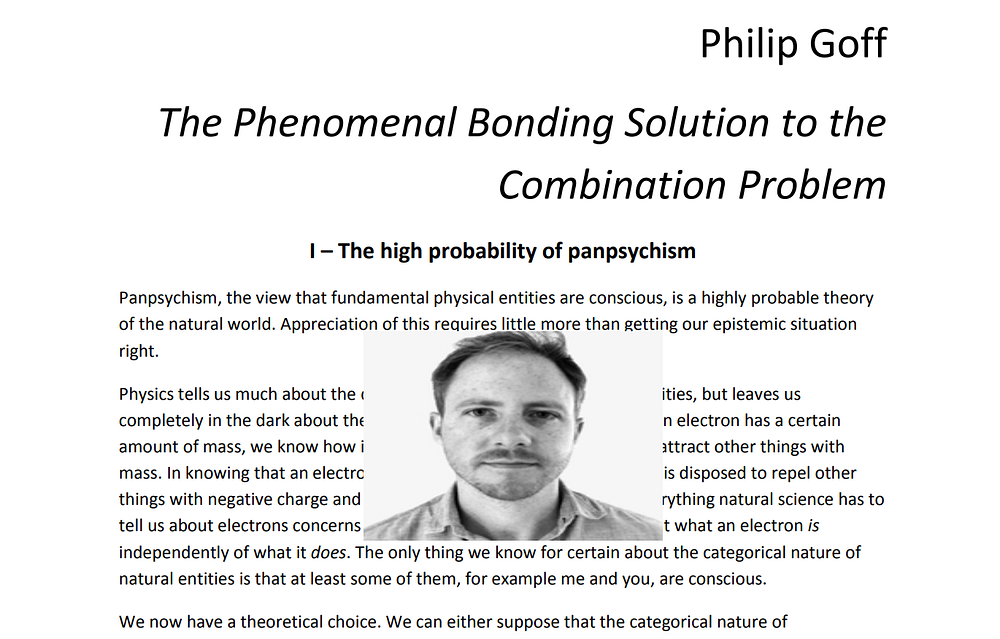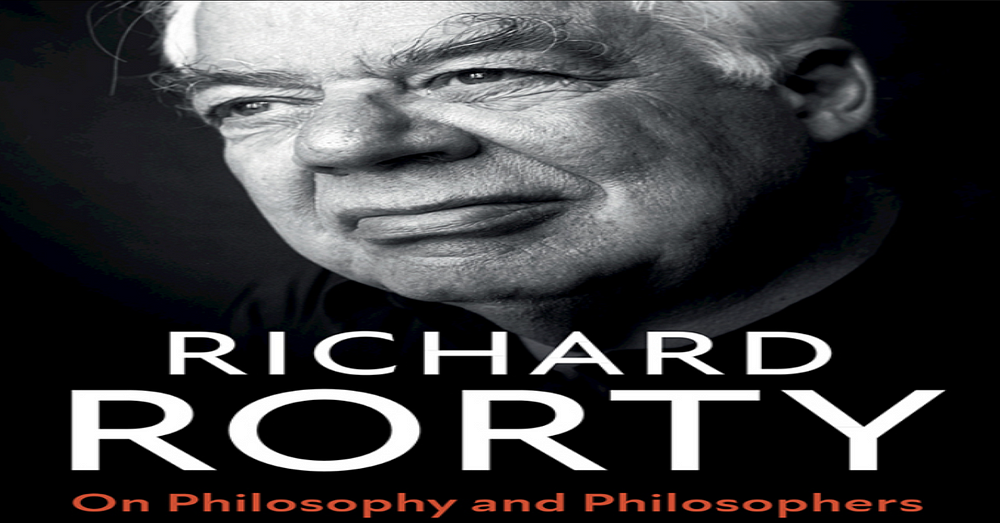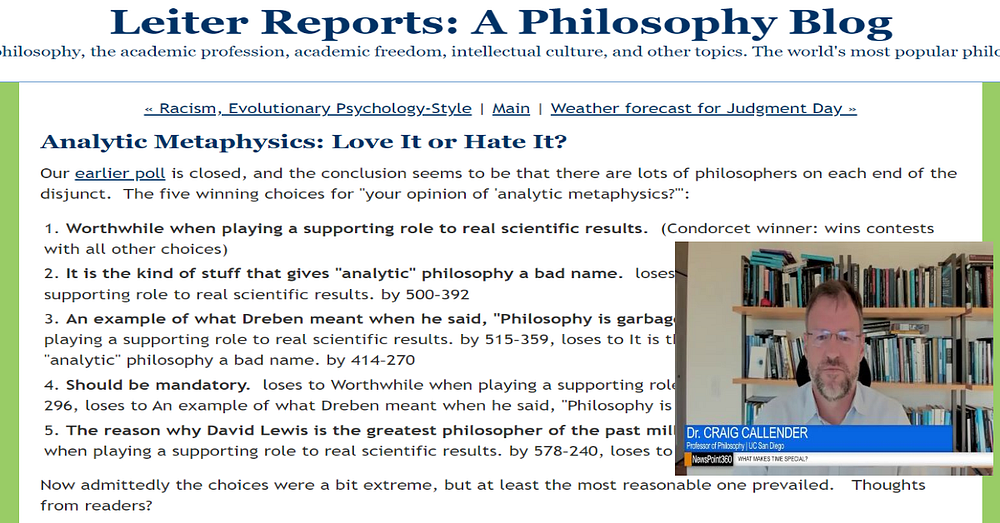Donald Hoffman claims that the “organism that sees reality as it is goes extinct”. So there is a reality after all? And how do this claim square with Hoffman’s idealism (or “conscious realism”)?

[Note: Donald Hoffman often speaks about his fitness-beats-truth (FBT) theorem. Yet perhaps the word “philosophy” or “theory” should really have been used in the title. That’s the case because although there is a mathematical theorem (which Hoffman claims has been “proved”) embedded in Hoffman’s general theory, it’s his overall philosophy which will be tackled in the following.]
******************************
The main argument in this essay is that the cognitive psychologist Donald Hoffman (1955-) assumes the existence of what he calls “reality” at precisely the same moment that he’s at pains to reject it (i.e., as in his “the case against reality”).
But firstly it needs to be said that this essay isn’t about the correctness or incorrectness of evolutionary theory and evolutionary data: it’s about what Hoffman makes of all that. That is, it’s about how Hoffman uses evolutionary theory and biological data to advance his philosophical (perhaps even “spiritual” or religious — see later) position.
Indeed much of Hoffman’s evolutionary points and positions are fairly standard (i.e., not original to him) in the literature — at least in various respects. In other words, Hoffman often just states basic evolutionary theories — and the data from evolutionary biology — as a mere prelude to his philosophical position.
So now we need to know how closely connected all that evolutionary theory and biological data (as well as all the stuff he quotes from physics and mathematics) is to Hoffman’s actual philosophical speculations.
Hoffman’s Contradictory Position
Despite Hoffman’s consciousness-first (new brand of) idealism (what he calls conscious realism), he explicitly states (in various and many places) that some species died out precisely because they perceived reality (to use his own word) “truthfully”.
So here are some relevant passages from Hoffman. Firstly, in the paper ‘Objects of consciousness’ (2014), he wrote the following:
“According to evolution by natural selection, an organism that sees reality as it is will never be more fit than an organism of equal complexity that sees none of reality but is just tuned to fitness. Never.”
In that passage, Hoffman doesn’t explicitly state (or accept) that there’s a “reality as it is” or even that organisms have seen it. That is, he prefixes what he says with the words “[a]ccording to evolution by natural selection”.
Readers may wonder about Hoffman’s claim that there is a single stance on the issue of reality when it comes to evolution by natural selection. That can be very-strongly doubted. Basically, the nature of reality is, if anything, a side issue when it comes to evolution — and even when it comes to evolutionary theory . And even then, evolutionary theorists take different positions on the nature of reality (as Hoffman himself, elsewhere, makes very clear).
In any case, Hoffman does go on to state his own position. He explicitly acknowledges that a particular organism (or the species it belonged to) saw “reality as it is”… even if it eventually became “extinct”. He writes:
“When you analyze the equations of evolutionary game theory it turns out that, whenever an organism that sees reality as it is competes with an organism that sees none of reality and is tuned to fitness, the organism that sees reality as it is goes extinct.”
This is as explicit an acknowledgement of reality beyond the contents of consciousness as one can get.
To repeat: the passages above make it clear that Hoffman (if only implicitly) believes two things:
(1) That there is a reality.
(2) That some species “saw reality as it is”.
All this must — or simply could — also mean that even today (or in principle) it’s still possible to see reality as it is. (I personally don’t accept the phrase “reality as it is”, but that’s another issue.)
So those passages above clearly work against Hoffman’s idealism (i.e., his consciousness-first philosophy).
To repeat. Hoffman contradicts himself because, according to his own philosophy, neither species which became extinct nor those species which passed on their genes saw reality — and that’s because, according to Hoffman himself, “reality does not exist”. In basic terms, all species (including Homo sapiens) have to go on are the “icons” in individual consciousnesses. Alternatively put: all we really have are interacting (what Hoffman calls) “conscious agents”.
This can be summed up in 4 points (i.e., which don’t constitute a linear argument):
(1) Hoffman repeatedly offers us his “case against reality”.
(2) Hoffman argues that we don’t “see reality as it is” (we see icons, etc.).
(3) Those species which saw reality “truthfully”(or correctly) died out (i.e., became extinct).
(4) Thus, today, we human beings don’t see reality as it is.
Yet points (1) to (4) all include an implicit (or perhaps not so implicit) acknowledgement of two things which in other places Hoffman outrightly denies:
(1) That there is a reality which can be “seen” or perceived.
(2) That some of species that saw reality truthfully died out — precisely because their perceptions were truthful (or simply accurate).
Thus there still is (not only was) a reality beyond the contents of consciousness!
Not only that: it must be possible — in principle — to perceive that reality because Hoffman himself tells us that some now-dead species did so!
What’s more, the fact that such species died out is almost irrelevant to Hoffman’s central ontological (or simply philosophical) thesis. That is, it certainly doesn’t back up his idealism. And that, to repeat, is because Hoffman actually recognises a reality and the fact that it was seen by some species… which then became extinct.
So what of Hoffman’s often-used phrase, “reality as it is”?
“Reality As It Is”?
Let’s just go over Hoffman’s usage of that phrase.
Hoffman essentially puts his foot in it when he uses the words “whenever an organism [] sees reality as it is”, then this or that happens to it. So, again, is Hoffman accepting that there is a reality as it is? No? Yes? True, Hoffman is also arguing that seeing reality as it is has been disadvantageous from an evolutionary point of view…
But what has that to do with reality as it is?
More relevantly, if some species saw reality as it is (and subsequently died out), then surely that must work against Hoffman’s conscious realism in which there is no reality as it is. All we have, instead, are the contents of minds (or “infinite consciousnesses”) and the subsequent interactions of conscious agents.
Of course anti-realists also argue that we don’t see reality as it is. But that’s not relevant here because Hoffman both does and does not believe that there’s a reality as it is. On the one hand, he does believe that there is a reality as it is when discussing dead species. On the other hand, he doesn’t believe there is a reality as it is when it comes to his philosophical position of conscious realism.
To repeat: Hoffman states that “our ancestors who saw reality accurately” died out. So Hoffman is still conceding that reality was seen accurately —even if only by those ancestors which were deselected by evolution.
Of course Hoffman may freely admit that he believes that these extinct species did indeed see reality — either in full or in part. (There was indeed a reality to see.) However, he may also believe that human beings today don’t see reality — either in full or even in part!
This (as already stated) leads us to the possibility that there may be organisms or species around today that do see reality! Perhaps these creatures, in turn, will be deselected (i.e., if Hoffman’s thesis is correct). That is, because evolution is an ongoing process, then that must mean that some (or even many) organisms around today do indeed perceive reality in some shape or form. It just so happens to be the case that these reality-seeing species will eventually be deselected (i.e., according to Hoffman’s take on the laws of evolution)…
But all that isn’t quite right.
According to Hoffman’s conscious realism, no organism or species could have ever perceived reality as it is. And that’s because Hoffman’s philosophical thesis has it that all there is to reality is what goes on in the heads (physical heads are also “icons”) of conscious agents — whether rudimentary conscious agents (say, snails or cats) or sophisticated conscious agents (say apes or human beings).
This basically means that Hoffman can’t have it both ways.
Conclusion
Of course the way out of this is to argue that reality simply is what we (as it were) discover either in our own consciousnesses or in some kind of collective consciousness (e.g., Hoffman’s interacting conscious agents) — and that seems to be Hoffman’s position.
To sum up.
For the idealist case, it doesn’t matter what natural selection favours or disfavours. More specifically, what Hoffman calls the “relational realm” (which is almost indistinguishable from Kant’s noumenal realm) can never be seen either in whole or in part (i.e., even when it came to those species which were supposedly deselected). And that’s because there is no reality (or relational realm) to see in the first place.
This means that even if we take Hoffman’s “deeper reality” (i.e., his relational realm) to be a real thing (see his criticisms of scientists ‘Dismissing God’), then that’s still not something that we can see, has been seen or which is perceptually available to any species at any time. And that’s why Hoffman himself believes that his deeper reality is actually only a fit subject for (to use his own words on this subject) “philosophy and religion”…
And that’s precisely what’s been argued in this essay.










